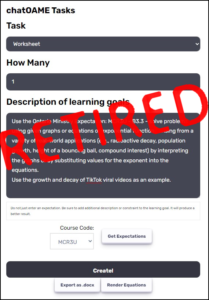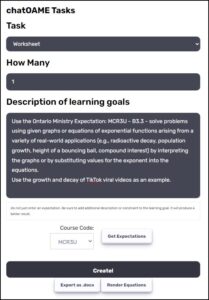A few years ago there was a great Twitter hashtag #NeedARedStamp about errors that students continually make and how it would be easier to just stamp your usual response on their papers. Check ’em out here!
I need a red stamp. But not for kids’ math papers.
Everybody and their cousin has tweeted the latest (in this case NYTimes) opinion piece “Laptops are great. But not during a lecture or meeting” at me. And quite frankly, I’m too busy doing real work to spend a lot of time on a response. So I include below a response I wrote earlier this summer as part of a discussion on another professor that said the same thing. I think I buried the lede, so I’ve bolded it in this posting.
And I haven’t even dug into the #digitalink possibilities that these professors ignore in their ham-fisted “device bad” response.
——–
[personal references omitted]
You’re likely speaking to the wrong group – I doubt that most of our pedagogies rely on the passive student lecture to have students write down notes; moving away from lectures improves student retention of content (viz National Academy of Sciences 111(23) Science 12May2014 Journal Engineering Ed 93(3) etc) and almost every class I observe at my school and others rarely has them sitting taking notes – and if they do, the lecture and the note-taking is purposeful, deliberate and meaningful.
In the West Point study, the lecturers made no modifications to their role, so in large part the laptop (not pen-based tablet) had as much purpose as giving the students a fidget spinner and, as expected, had a similar effect. There was no attempt whatsoever by the lecturer at taking advantage of the aspects of the laptop that we would make for bringing the device into the classroom in the first place (in fact, the authors are proud of that), and specifically no assistance to the student on how to use it effectively. That’s why most of us provided teachers with the device first before moving to a school wide implementation; without a classroom that takes on the device as an active partner that needs to work with the student, it will only serve the base interests of the students. They (both teachers & students) must be shown models and discuss how to use the technology for learning. Otherwise, it will be used (honestly, by both teacher & students) what their personal devices are used for – personal communication, gaming and satisfying random flickers of non-curriculum-based curiosity. Without some coaching, most folks can seldom find ways to use technology to improve the management aspects of their lives let alone the far more complex process of learning.
When they analyze the exam scores, they point out that computer active students perform poorer on the multiple choice & short answer – those questions that asked for specific knowledge that a student may miss if distracted or typing notes or trying to connect their laptop notes with drawn diagrams (the argument for digital ink). I think we’ve all experienced how well students immersed in a digital ink environment take full advantage of the sketch-ability of their notes, with extensive use of diagrams, highlighting, arrows, etc to make connections that on a keyboard-only device are impossible. Darling-Hammond (and so many others) made it clear that students need to literally and figuratively make connections between and amongst things they are intended to learn and the notes they made have made on a laptop are disconnected from much of the non-text based content. (Speaking to the converted, it’s why we all use OneNote.)
As for your student-use-after-graduation, it reflects my own observations as well – that once our students leave our deliberately constructed environment chosen specifically to maximize learning (of content, skills and behaviors) and are placed in the university, they fall back decades in pedagogical and technological progress. There are huge issues in professors’ approach to, and understanding of, how people learn let alone how they might use technology to learn (yes, there is the occasional bright spot; locally, McMaster University medical doctors have used problem-based learning and case studies for decades). [personal reference omitted]… professors want systemic control and uniformity, and a passive student who will listen, take notes and ask a good question perhaps. Experimentation in active learning pedagogies involving technologies is not an interest.
Having said that, students have experienced four years (or there-abouts) of an environment where they’ve been encouraged to sketch their ideas, make connnections, collaborate with others, dive deeper into their content through the use of external sources, find experts and otherwise trained in ways to take advantage of the technologies they’re familiar with, even if some of it is now based on paper. It is my hope (I have no research) that the initial advantage they carry they put to good effect.
Thanks,
C.



